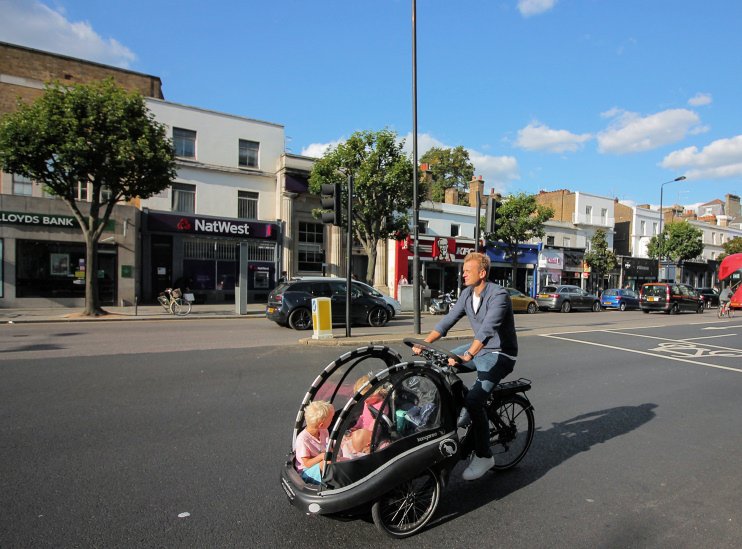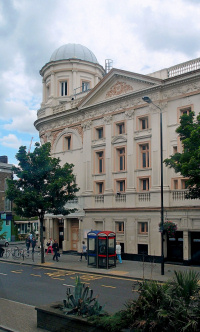Notting Hill Gate
Notting Hill Gate, Kensington & Chelsea
A visually dull but culturally interesting stretch of road situated at the meeting point of Bayswater Road, Kensington Church Street, Holland Park Avenue and Pembridge Road

This was a lonely stretch of the ‘way to Uxbridge’ with a few cottages beside the Kensington gravel pits until a tollgate was set up in the mid-18th century. The gate stood at the junction with what was then Portobello Lane, now Pembridge Road, and was rebuilt twice over the following 100 years. As neighbouring streets were laid out, bars were placed across them to prevent travellers from evading the toll.
A higgledy-piggledy set of dwellings grew up along the roadway, some of which were demolished in the late 1860s when the railway first came through. Coaches and omnibuses ran to several destinations in west Middlesex and numerous inns were built here, which were progressively replaced by shops.
South of the main road, speculative developers crammed working-class families into backstreet terraced houses that are now highly sought-after and dubbed Hillgate Village. In 1900 (when the Central line arrived) a local clergyman described conditions here as “worse than the East End” – but vicars were always saying that sort of thing about the less salubrious parts of their parishes.
In the late 1950s Notting Hill Gate was brutally redeveloped in a road widening programme, creating a monotonous streetscape out of what had formerly been a characterful if messy thoroughfare and combining the two underground stations within a single concourse.

The shopping facilities at Notting Hill Gate are unexciting compared with nearby Portobello Road and its offshoots but the locality has some chic eateries. The artist Damien Hirst ran the ultra-trendy Pharmacy restaurant here from 1997 to 2003, selling its fixtures and fittings for £11 million after its closure.
Notting Hill Gate has four venues that are popular with the cultural cognoscenti: the Coronet opened as a theatre in 1898, was converted to a cinema after the First World War and became home to the Print Room theatre in 2015; The Gate was converted from a coffee palace into the Electric cinema in 1911 and took its present name in 1985; The Gate Theatre was established in 1979 in a room above the Prince Albert pub on Pembridge Road and is nowadays dedicated to producing a repertoire with a wholly international focus; the Notting Hill Arts Club hosts live music, niche club nights and art exhibitions.
